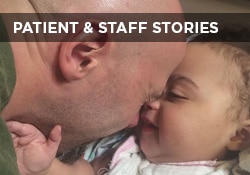This website uses cookies so that we can provide you with the best user experience possible. Cookie information is stored in your browser and performs functions such as recognising you when you return to our website and helping our team to understand which sections of the website you find most interesting and useful.

Susan E. Mazer, Ph.D. Blog
Thoughts and ideas on healthcare
Hi, and welcome to my blog! I'm Susan E. Mazer -- a knowledge expert and thought leader on how the environment of care impacts the patient experience. Topics I write about include safety, satisfaction, hospital noise, nursing, care at the bedside, and much more.
Should Hospice Care Be More Regulated?
February 6, 2015
 According to a recent report in the Huffington Post, regulation of hospice care in the U.S. is spotty at best, And, the risks common to hospices are not different than those in acute care hospitals: falls, infection, poor pain management.
According to a recent report in the Huffington Post, regulation of hospice care in the U.S. is spotty at best, And, the risks common to hospices are not different than those in acute care hospitals: falls, infection, poor pain management.
But, hospices are inspected far less often than nursing homes or hospitals (some only every six years) and few penalties are levied on those found with violations.
The end game of a hospitalization is good health — or at least, there is an expectation of life after discharge. The end game of hospice is a good death.
The expectations of hospice care is all about process; the total experience. Comfort, compassion, safety, pain management, and dignity. The list is not long.
We still have a conflicted relationship with death and dying. Palliative care has taken root in some organizations, but not to the degree that needs are fully met.
Also, palliative care is paid for through regular insurance streams, is available for anyone in need (not just the terminally ill), and may be administered through regular medical channels.
Hospice provides palliative care and takes over all patient needs during the last six months of life. Hospice care may occur in the patient’s home, hospital, or a hospice center. Furthermore, reimbursement for hospice care has steadily declined while the demand has grown.
A 2009 rule from the Center for Medicare and Medicaid Services (CMS) initiated a permanent reduction in hospice reimbursement rates of approximately 4.2 percent. The Affordable Care Act (ACA) further decreased the Medicare hospice rate by introducing a productivity adjustment factor that will reduce annual hospice payments by an additional 11.8 percent over the next 10 years.
Beginning in 2014, hospice agencies were mandated to report every patient’s comfort level (pain management) and select at least one other quality indicator to report. Things like the number of patients with shortness of breath who improved within one day of assessment, or the number of falls.
Deficiencies require proactive remediation.
And yet, the Huffington Post report concludes that regulating and inspecting hospices is a low priority. Penalties for breaches of safety are few, if any. After all, the end game leaves no room for legal repercussions.
The risks at the end of life sit not with mortality, as death is the expected end. Rather, the risks lie in morbidity — pain and suffering. The relief of suffering is primary and includes the comforting of patient and family; the understanding and achievement of daily, immediate goals; and the respect for the living as they are dying.
The environment in which care is provided at the end of life must, itself, be palliative, devoid of distractions and anything that causes “expectation, anticipation, and fear of surprise,” as Florence Nightingale wrote.
Hospice care has been around longer than current regulations and policies and the need has never been greater. Regulations for hospice should reflect the sacred trust that hospice is: comfort, compassion, and caring. Safety is the foundation of each of these.
P.S. If you like this post, please do me a favor and share on LinkedIn, Twitter, Facebook, etc. Also to get automatic notices when a new post is published, subscribe (upper right). No spam – just great content. Thanks!










